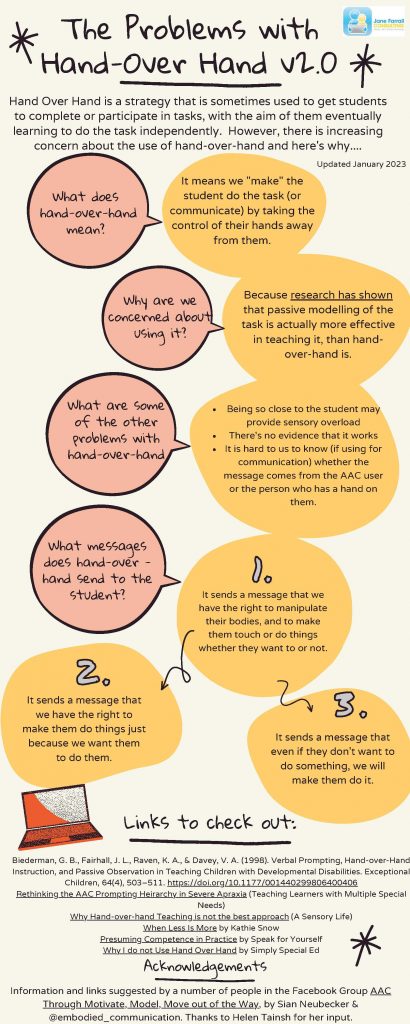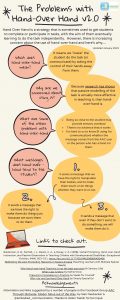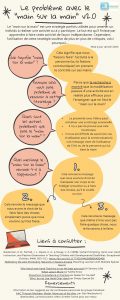Hand-over-hand as a teaching strategy is increasingly being defined as restrictive practice. However, I still find that many people working in this area use hand-over-hand as a teaching strategy without being aware of the problems around it - or the fact that there are other, more effective, teaching strategies.
In 2021, I published an Infographic called "The Problems with Hand-Over-Hand." Today I have updated it with further information - and I'd love as many people as possible to share the updated infographic so that we can continue to spread the word about the problems with this approach - and what we should be using instead!
The previous version of this handout focused simply on the concerns about using this approach - but in version 2.0 I have added in a link to Biederman, Fairhall & Davey (1998). In this research, the authors demonstrate that passive modelling is more effective in teaching new skills to students with developmental disabilities than either hand-over-hand or verbal prompting. One sentence in the article makes me sad: "Our evidence therefore indicates that current methods for teaching basic skills to children with severe developmental delays may require reassessment because simple observation of modeled skills appears to be more effective than more labor-intensive instruction". 25 years later, the technique they demonstrated wasn't as effective as modelling, continues to be used by many. And, in this freely available article they reference other studies which come to the same conclusion.
So, please share the infographic below and let everyone know - hand-over-hand isn't just restrictive practice, it's also less effective practice!





Tracey Hanigan
Helen Brunner
jane
Helen
jane
Kate Ahern
jane